Gesture-Events are a central part of modern user interface development, especially when it comes to touchscreen applications. Whether you are developing an app for Windows, Android, or iOS – the right handling of touch events can be crucial for a positive user experience. In this guide, I will show you how to use various gesture events in JavaFX to create interactive and dynamic applications.
Key Insights Gesture events in JavaFX enable the implementation of user interactions like touches, swipes, zooming, and scrolling. It is crucial to first capture the touch before implementing further actions. Zero-overhead event handling and the use of touch events are essential for a smooth user experience.
Step-by-Step Guide
Step 1: Setting up the workspace
To work with gesture events in JavaFX, you need a simple user interface. Start with a Stage and a Scene that contains a simple rectangle. This will allow you to visualize the events triggered by touch and movement on the touchscreen.

Step 2: On Touch Pressed event
Let's start with the On-Touch-Pressed event. This event is triggered when the user touches the rectangle on the touchscreen. Here, the method getTouchPointToString is called, which shows you the coordinates of the touch point.
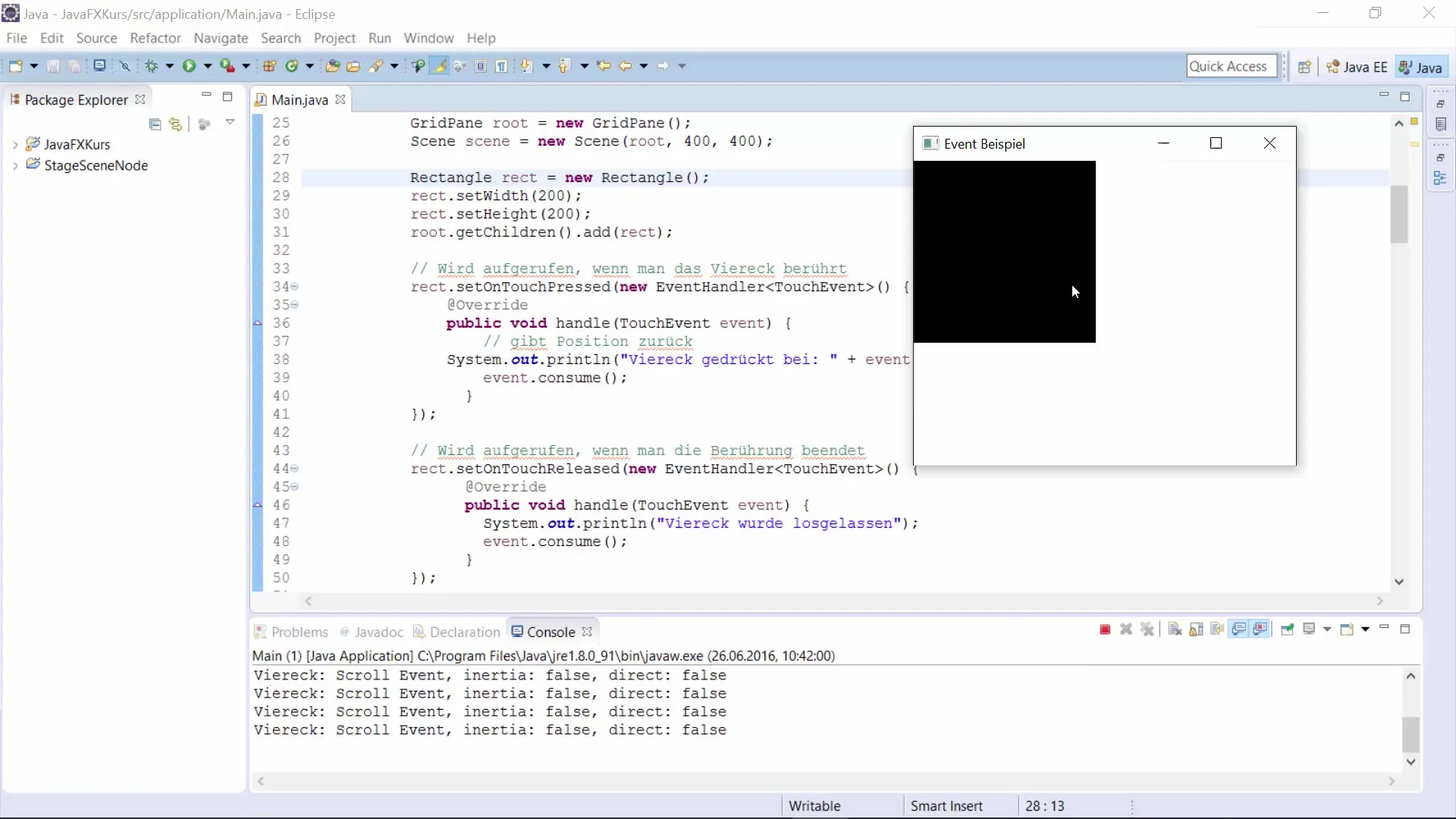
Step 3: Consuming the event
It is important to consume the event to avoid passing it to the parent container. This prevents unnecessary resources from being consumed. Use the consume() method to keep the event in the current context and prevent other listeners from being activated.
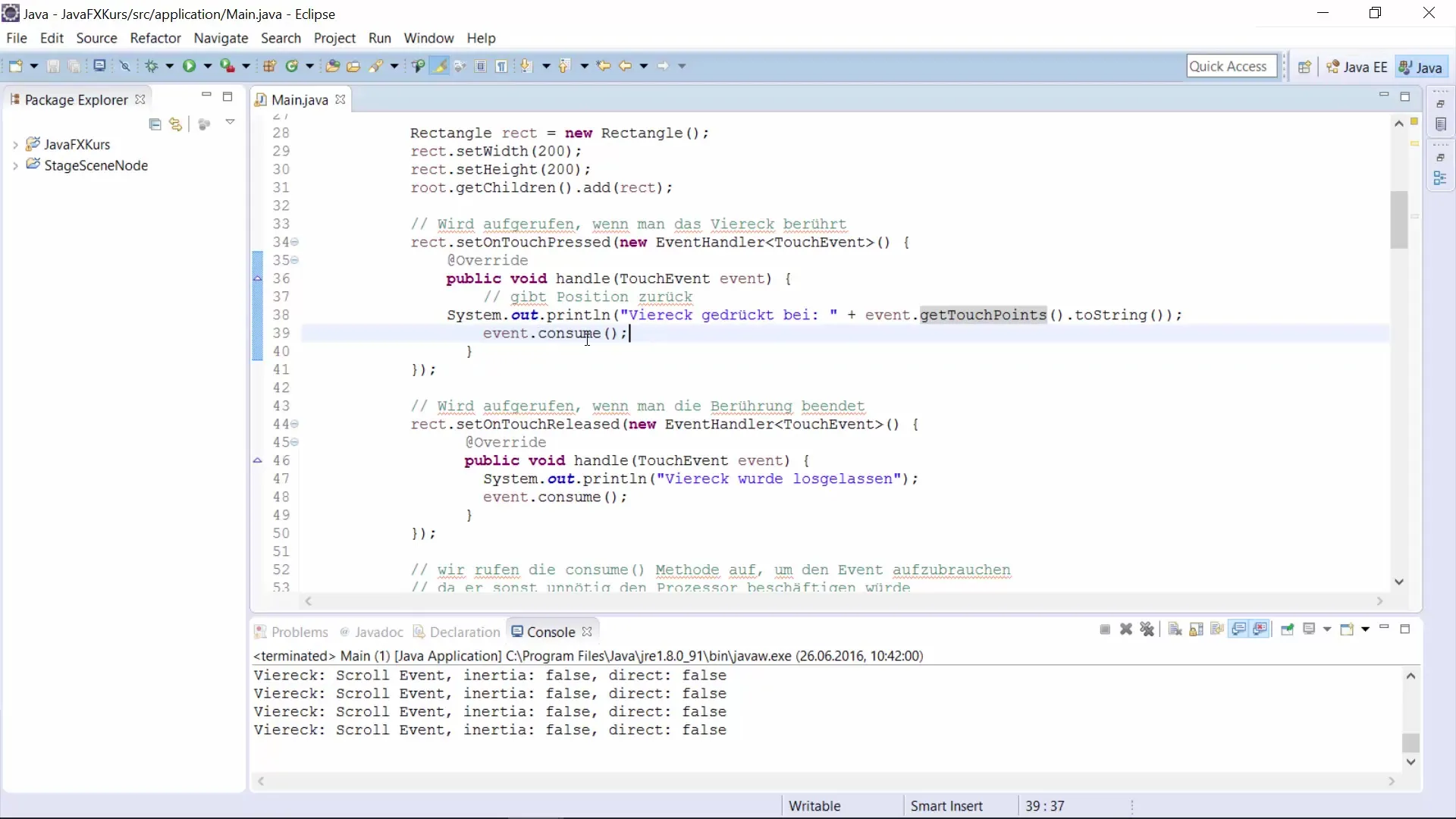
Step 4: On Touch Release event
The On-Touch-Release event is triggered when the user lifts their finger off the screen. To process the touch, you can use a similar structure as with the On-Touch-Pressed event. Use this opportunity to provide feedback that the touch has ended.
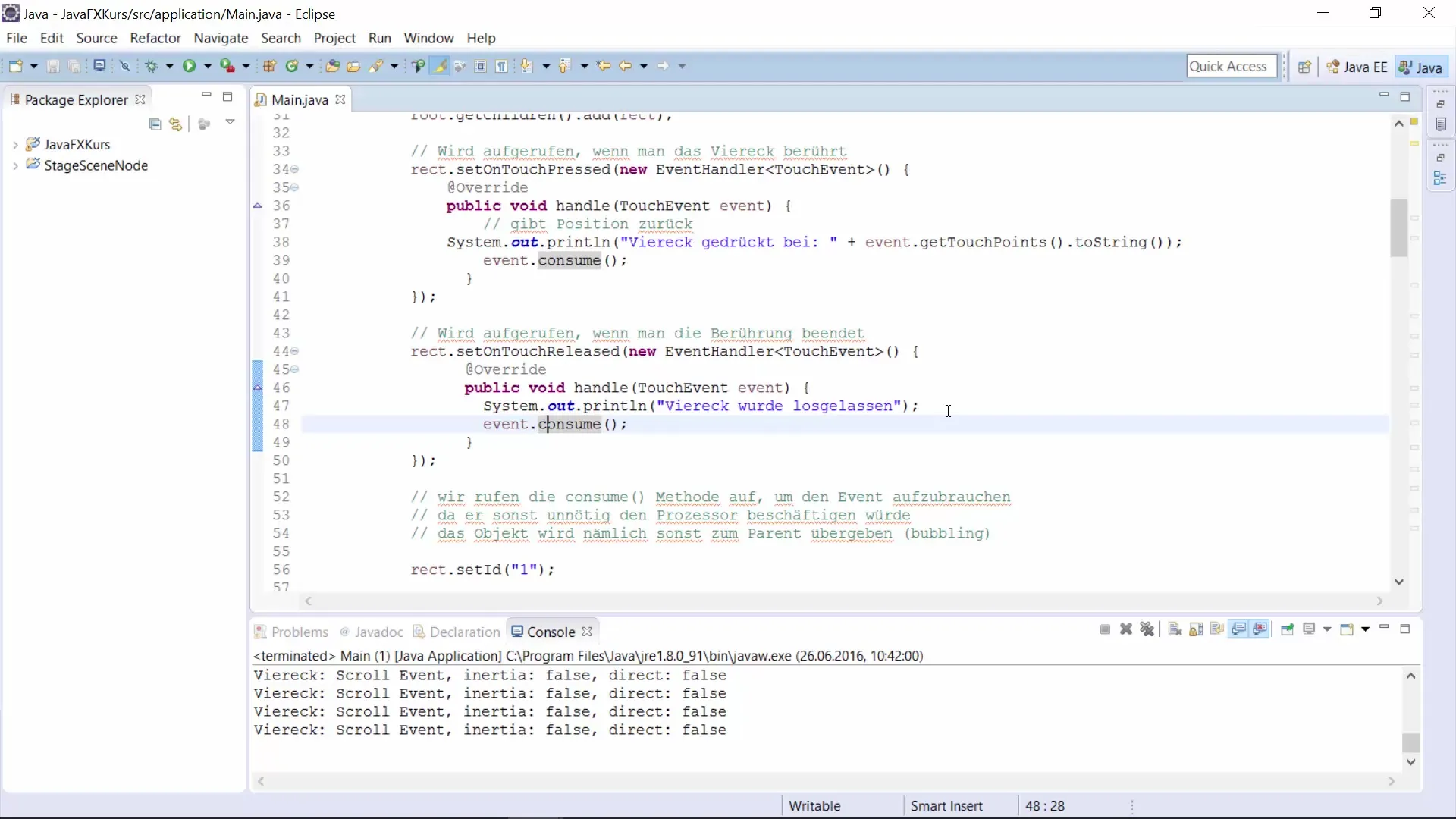
Step 5: On Touch Move event
The On-Touch-Move event is useful for tracking the movement of the finger across the screen. When the user drags the element, you can capture the initial and final position and respond accordingly. This allows you to dynamically design interactions with the rectangle.
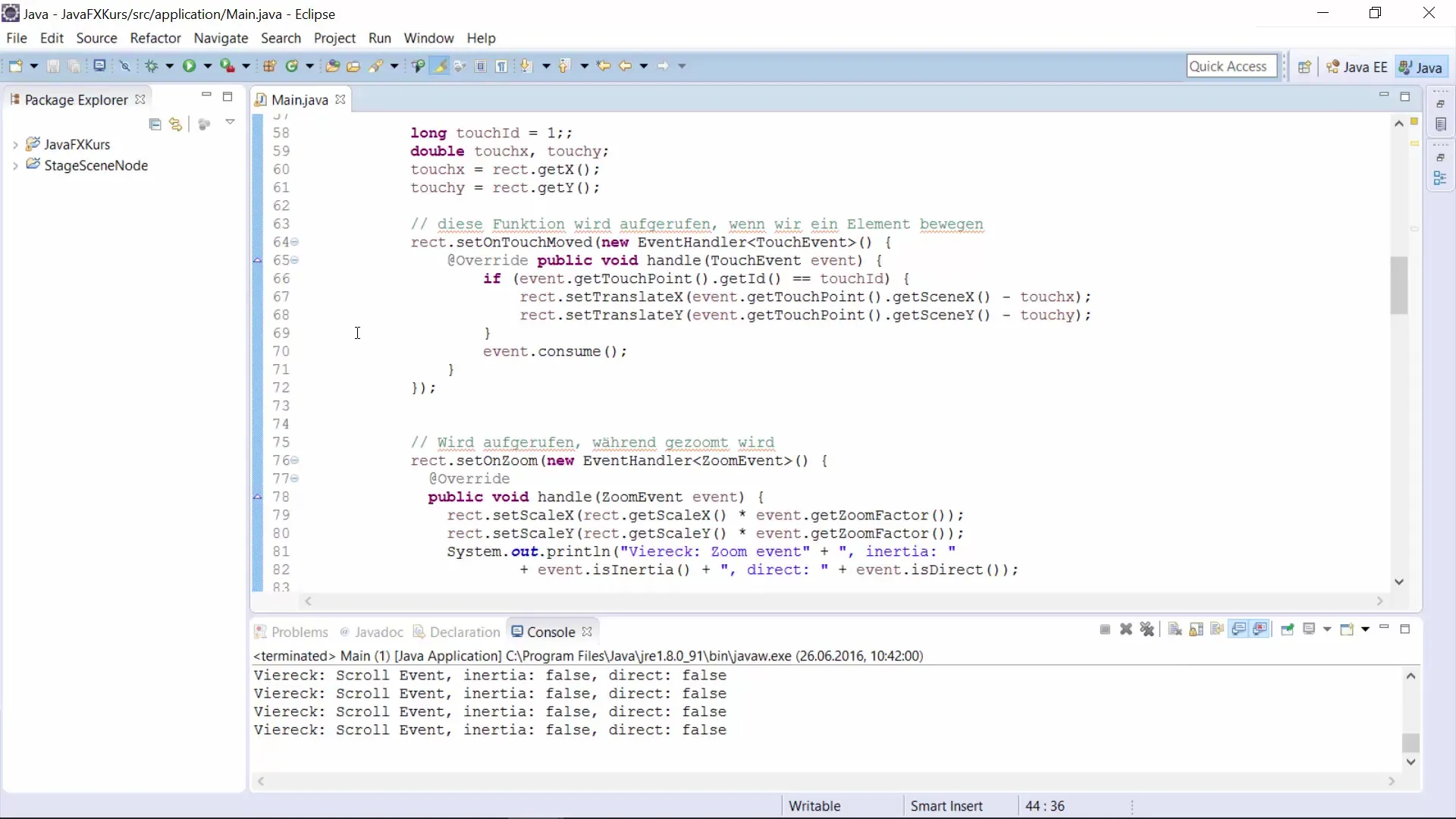
Step 6: Implementing zoom functionality
Zoom functionality is important in touch-based applications. With the Set-On-Zoom method, you can register changes to the zoom factor. The corresponding event is triggered as soon as the user employs pinch-to-zoom on the screen. Make sure to use these values in your UI updates.
Step 7: Implementing scroll events
Scroll events are crucial for moving elements when the user scrolls up or down. You can dynamically adjust the position of the rectangle by applying the translateX and translateY properties in your code.
Step 8: Rotation events
If you need users to be able to rotate objects, you can use the Set-On-Rotate function. This method allows you to capture rotation events when interacting with an element.
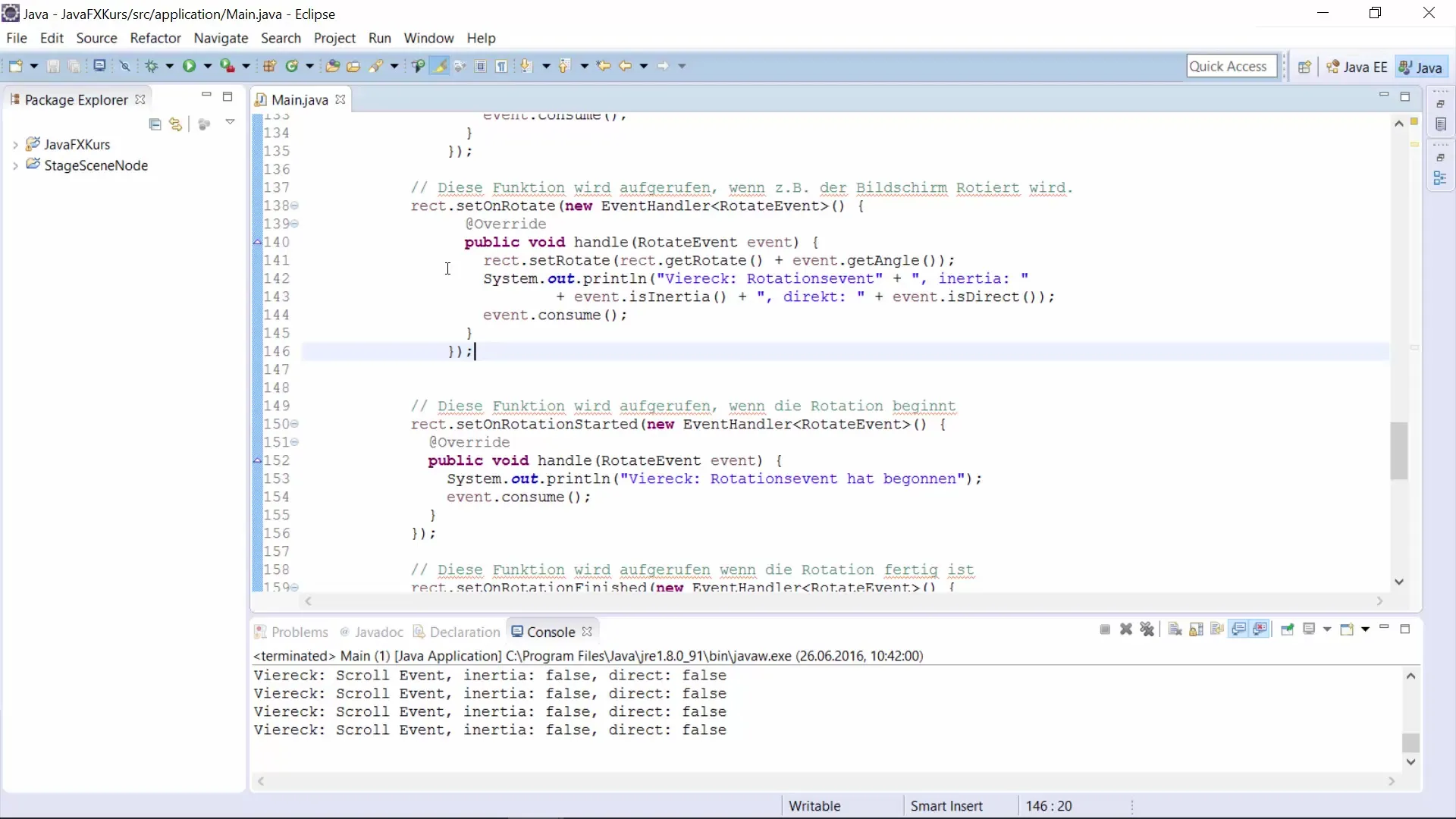
Step 9: Using swipe events
Swipe events are particularly useful in mobile applications. Define swipe events for upward and downward swipe gestures to navigate users through content or trigger specific actions. This can be easily implemented with the Set-On-Swipe method.
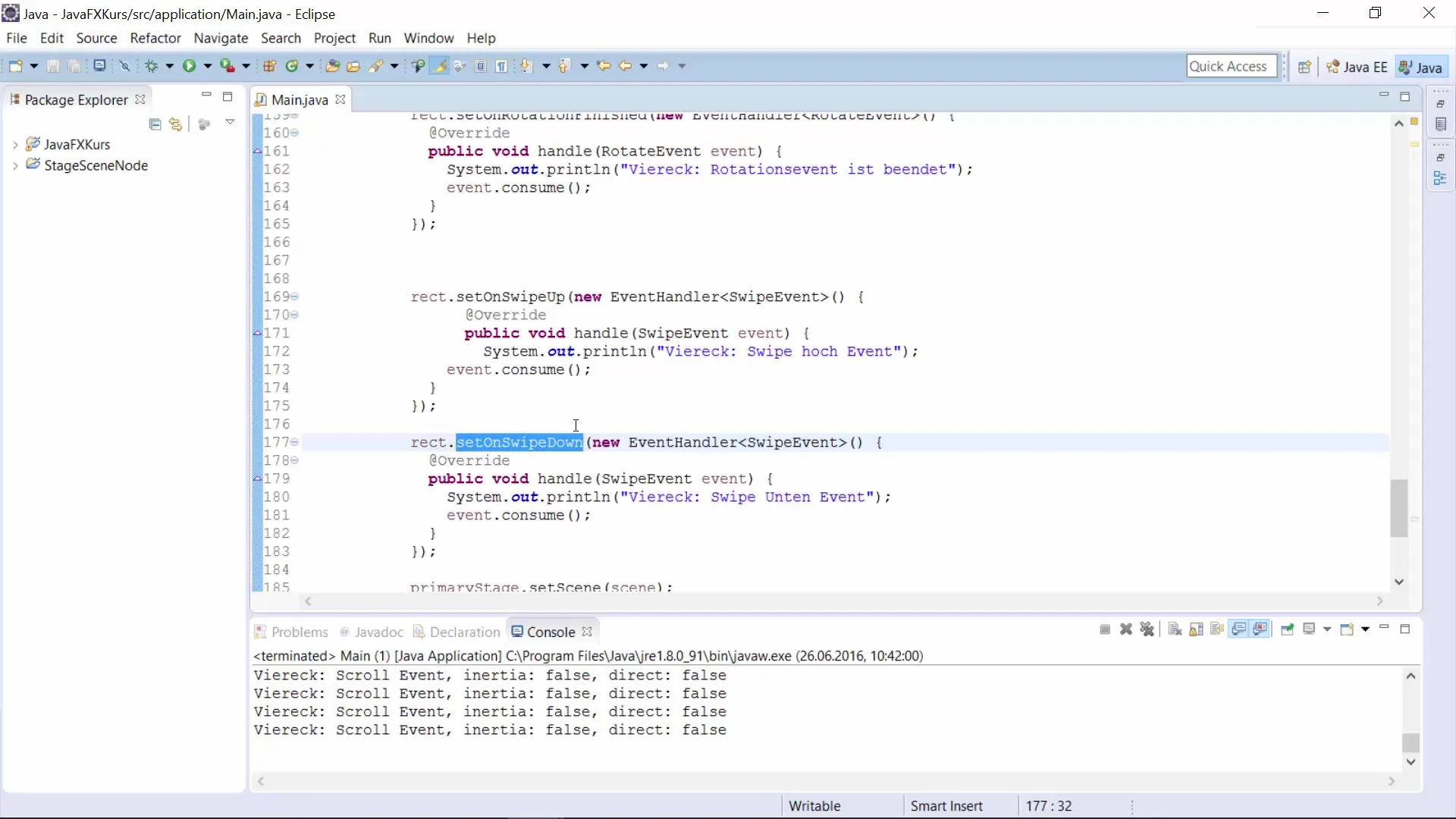
Step 10: Providing feedback
Finally, it is important to provide feedback to the user when gestures are recognized correctly. Use status messages or visual indicators in the user interface to give users clear feedback about their actions.
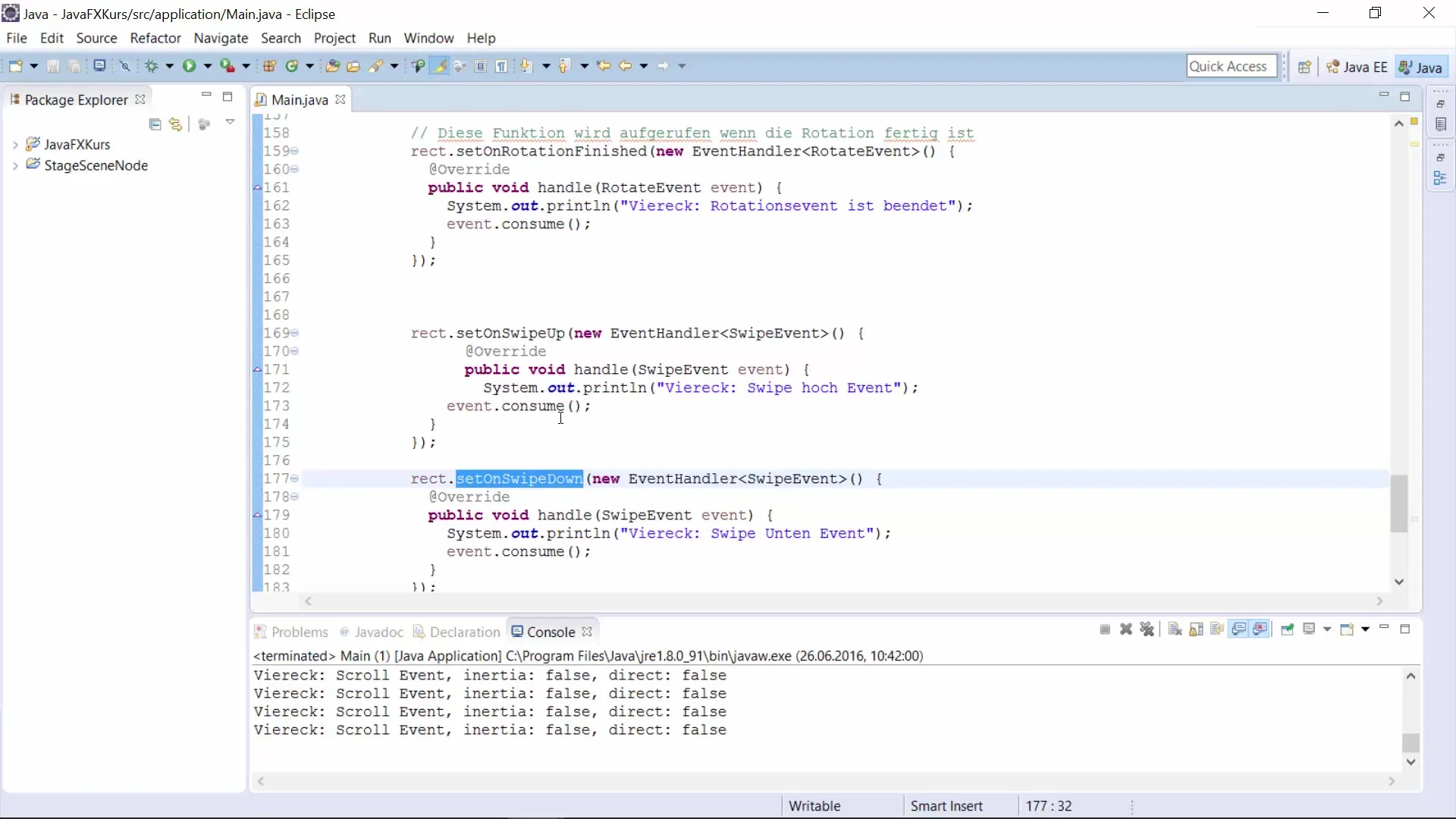
Summary – JavaFX: Understanding and Implementing Gesture Events
Gesture events in JavaFX significantly enhance the usability of your applications on touchscreen devices. By properly managing touches, movements, zooming, and scrolling, you can create dynamic and interactive user interfaces.
Frequently Asked Questions
How do I implement gesture events in JavaFX?By using various touch event handlers such as onTouchPressed, onTouchReleased, onTouchMoved, and onZoom in your application.
What is the difference between onTouchPressed and onTouchReleased?onTouchPressed is triggered when the user touches the screen, while onTouchReleased is activated when the user lifts their finger off the screen.
How can I utilize swipe events in my application?Use the Set-On-Swipe function to respond to the user's swipe gestures and trigger corresponding actions.


